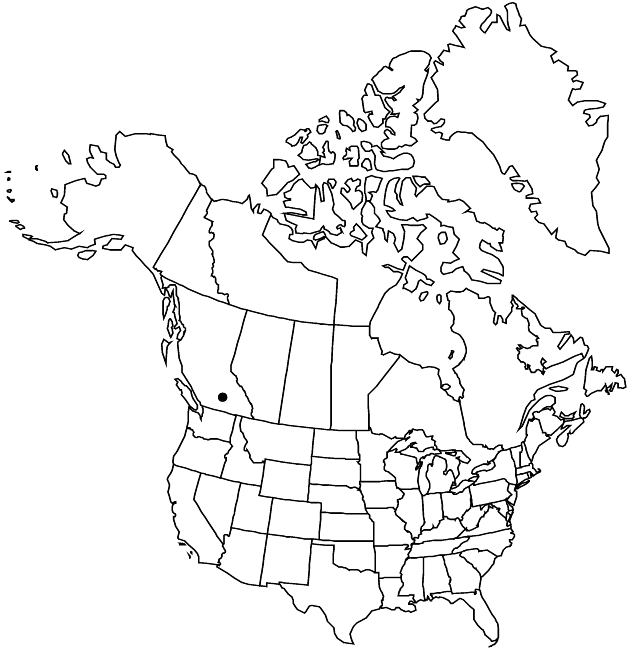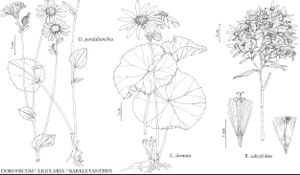Doronicum pardalianches
Sp. Pl. 2: 885. 1753.
Common names: Great leopard’s-bane
IntroducedIllustrated
Synonyms: Doronicum cordatum Lamarck
Treatment appears in FNA Volume 20. Treatment on page 612.
Plants 30–90 cm. Stems sparsely pubescent proximally, nearly glabrous distally. Leaves: blades of basal leaves ovate-orbiculate, 6–12 (–19) × (5–) 7–14 cm, bases cordate, margins weakly dentate or entire, faces (and petioles) glandular-pubescent; cauline leaves 3–7 (–10), petiolate (proximal) or sessile (distal), blades ovate to lanceolate, bases clasping or not. Heads 3–12 (–17) in corymbiform arrays, 3–5 (–6) cm diam. Peduncles 12–85 mm. Phyllaries linear-lanceolate, (8–) 12–18 mm, lengths about 2/3 rays, apices acute. Ray corollas 16–24 mm. 2n = 60.
Phenology: Flowering May–Sep.
Habitat: Moist forest openings, disturbed areas
Elevation: 0–100+ m
Distribution

Introduced; B.C., Europe
Discussion
Selected References
None.
Lower Taxa
None.
"broader" is not a number.
... more about "Doronicum pardalianches"
introrse +
connate +
acute +
papillate +
rounded;truncate +
scarious +
hispidulous +
papillate +
corymbiform +
continuous +
cordate +
nerved +
ovate;lanceolate +
winged;nerved;ribbed +
1;15 +
stigmatic +
barbellulate +
persistent +
absent +
absent +
Great leopard’s-bane +
not 2-lipped +
yellow +
monomorphic +
staminate +
straight +
glandular-pubescent +
distinct +
proximal +
1;5 +
bisexual +
dispersed +
equaling +
indeterminate +
3;12 +
Present +
true +
surrounding +
campanulate;hemispheric +
alternate +
recurved;erect +
scarious +
2-carpellate +
inferior +
attached +
anatropous +
persistent +
tough +
thick +
absent +
connate +
persistent +
herbaceous +
falling +
linear-lanceolate +
subequal +
equal +
Sp. Pl. +
1753 +
pistillate +
absent +
fertile +
epaleate +
convex;hemispheric +
fibrous +
exalbuminous +
modifed +
2;3 +
alternate +
erect +
continuous +
2-branched +
glabrous +
papillate +
Doronicum pardalianches +
Doronicum +
species +
equaling +
shorter +
perennial +
